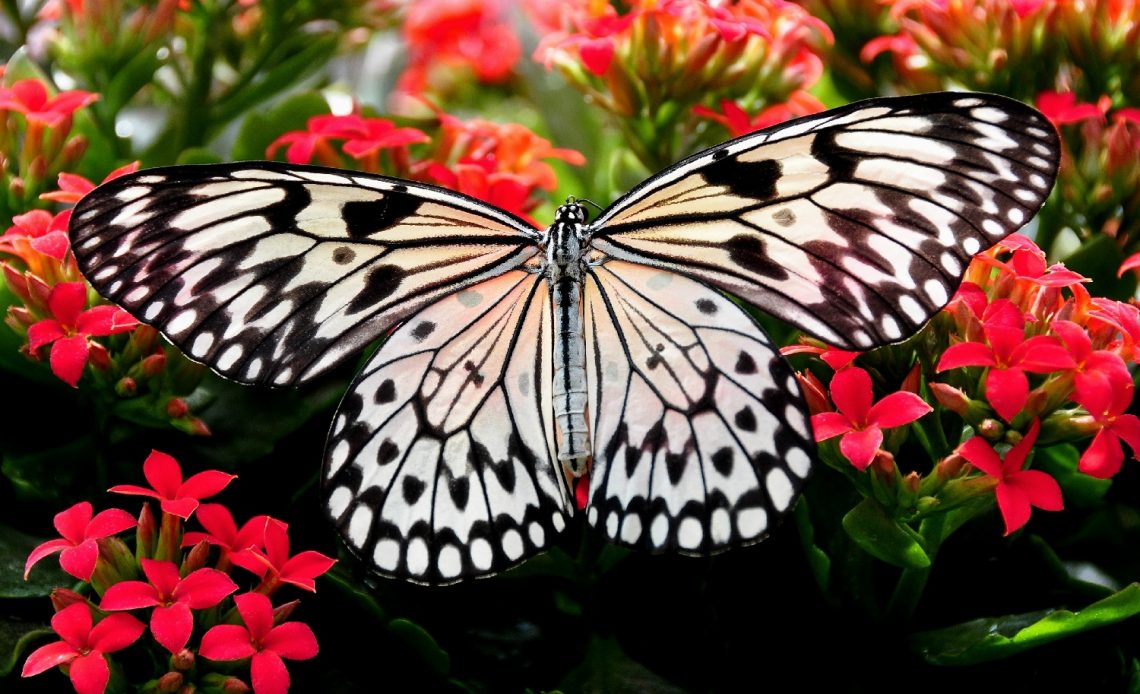

We’re here to help! Wild Yards is a completely free website that is 100% dedicated to helping you create a wildlife-friendly, sustainable yard. Read more
WildYards is reader-supported. When you buy a product through a link on our site, we may earn a comission. Every product is independently selected by our (obsessive) editors and our reviews are unbiased and objective. Read more about our mission or our privacy policy.
Butterflies are amazing pollinators – and in most cases, providing your flower garden is full of colorful, nectar-rich blooms, you’ll likely get plenty of visitors. That said, some so-called ‘butterfly plants’ are almost guaranteed to bring in winged visitors.
From geraniums to goldenrod and lilacs to lavenders, the following 30 plants are perfectly shaped, colored, and fragranced to appeal to butterflies.
Azalea
Butterflies are particularly attracted to the azalea’s endless abundance of bright pink colors – often spanning several weeks. These reliable plants are suitable to grow in the ground or containers so long as they don’t dry out.
Azaleas are typically hardy across USDA zones four through ten, blooming throughout the spring and summer – ideal for most sunshine-loving butterflies.
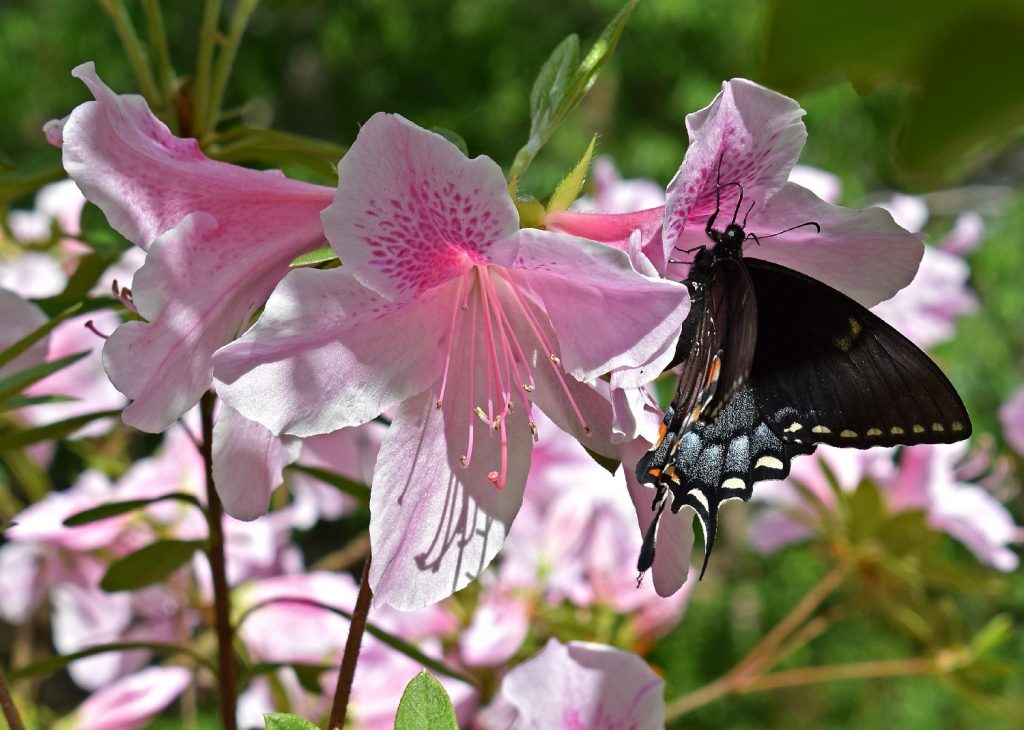
Bee Balm
Bee balm’s striking red colors prove popular with many butterflies, growing hardy across USDA zones three up to nine. Their flowers protrude like tubes, offering reliable nectar for roving insects such as the eastern tiger swallowtail.
These plants will typically grow to around four feet tall at the height of summer, offering ideal access to butterfly visitors.
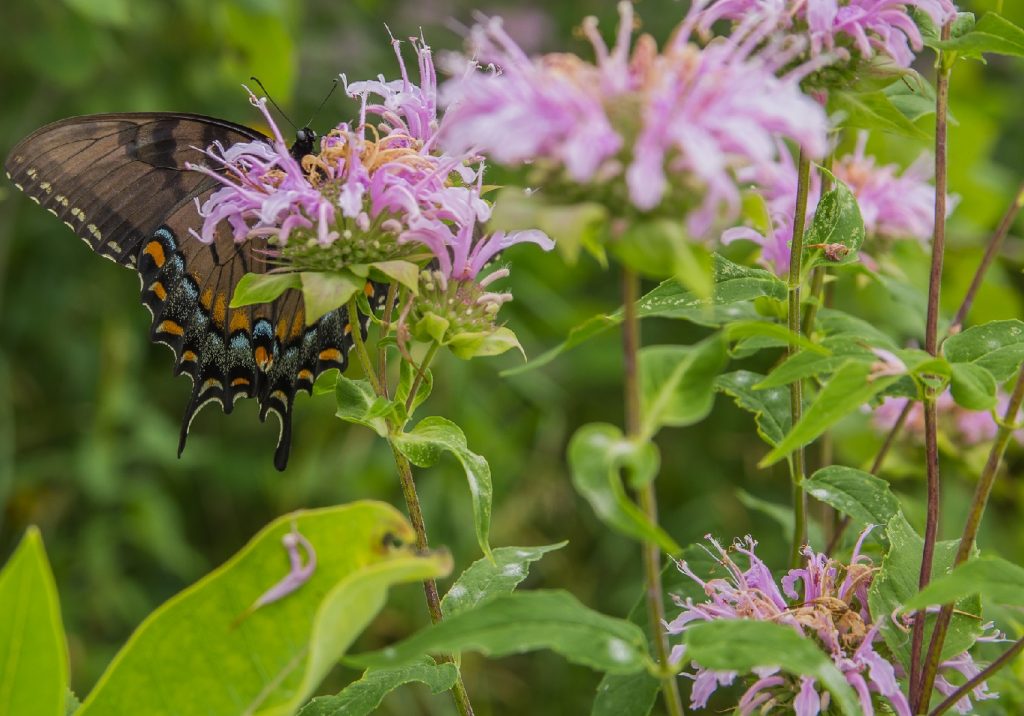
Blueberries
The USDA has recorded several species of blueberry shrub native to the US, with the fruit’s color being its most appealing asset to butterflies. USDA zones vary depending on the type you grow – many thrive from zones three to ten.
Blueberry plants are ideal for attracting butterflies in the full sun beyond the height of summer thanks to their long-lasting color. Always prune to contain this plant – and keep its soil draining well.
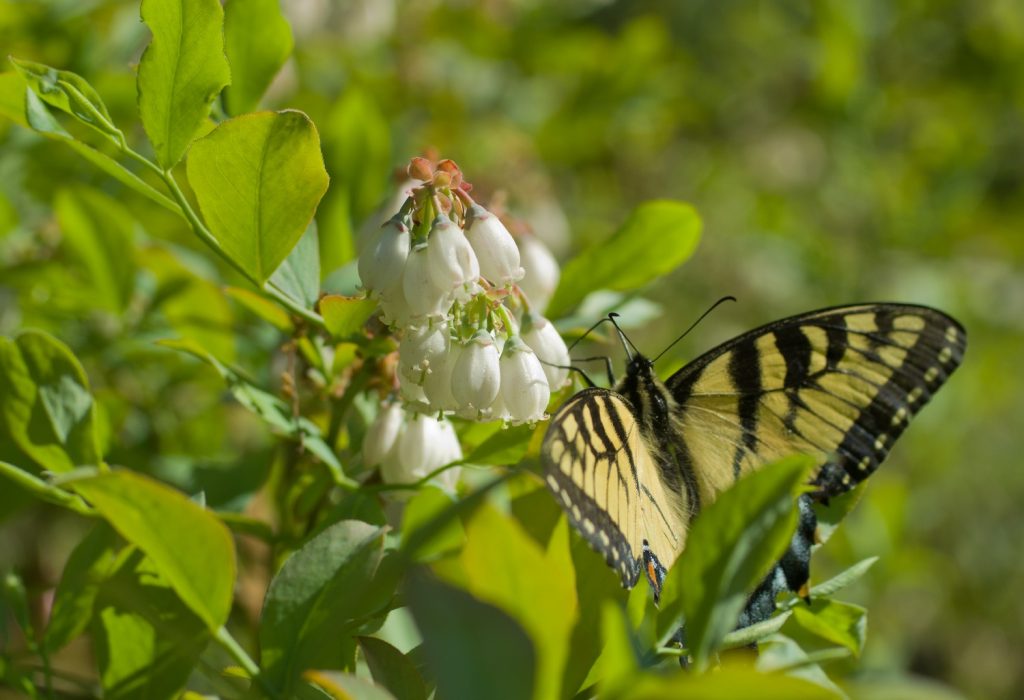
Butterfly Bush
Thought to be nicknamed thanks to its insect appeal, the buddleia is hardy across zones five through nine and boasts colors bursting in yellow, pink, blue, and white. Painted ladies love this late summer shrub thanks to its almost invasive growth – it requires little support to propagate!
Be warned – the butterfly bush will grow to 12 feet tall if left to persist. However, it’ll bloom well into early September. If you’re considering growing lilacs to attract butterflies, make the buddleia your first choice – it’s also known as the summer lilac.
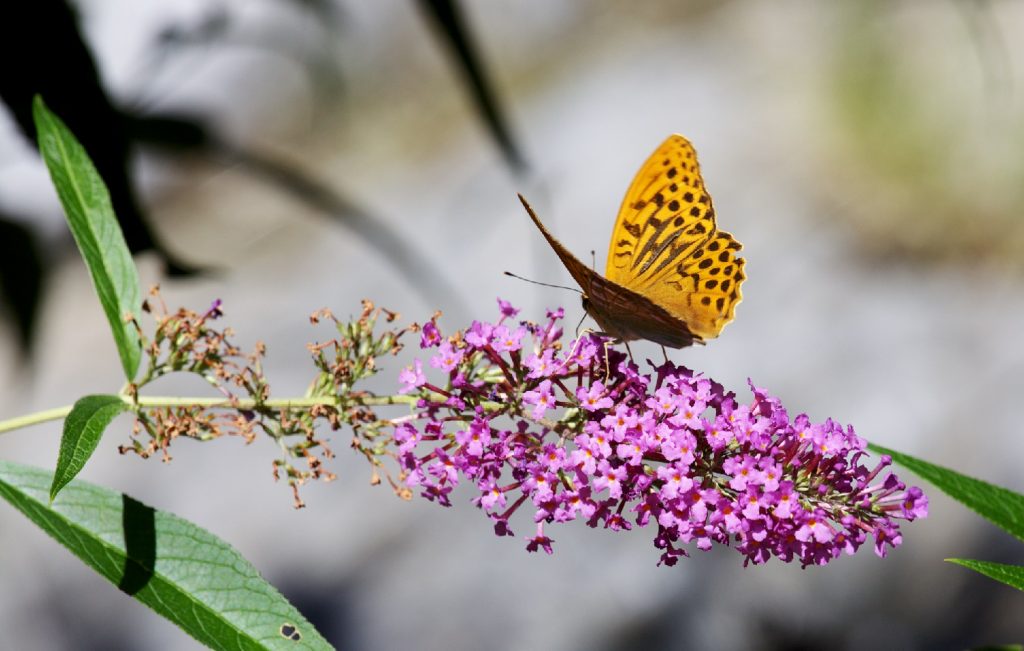
Catmint
The nepeta is popular with butterflies thanks to its rich blue, purple and lavender colors and its easy access at up to three feet in height. It’s often bursting with nectar and will attract pollinators from spring through fall.
For best results with catmint, grow it as a hardy perennial between USDA zones three and nine.
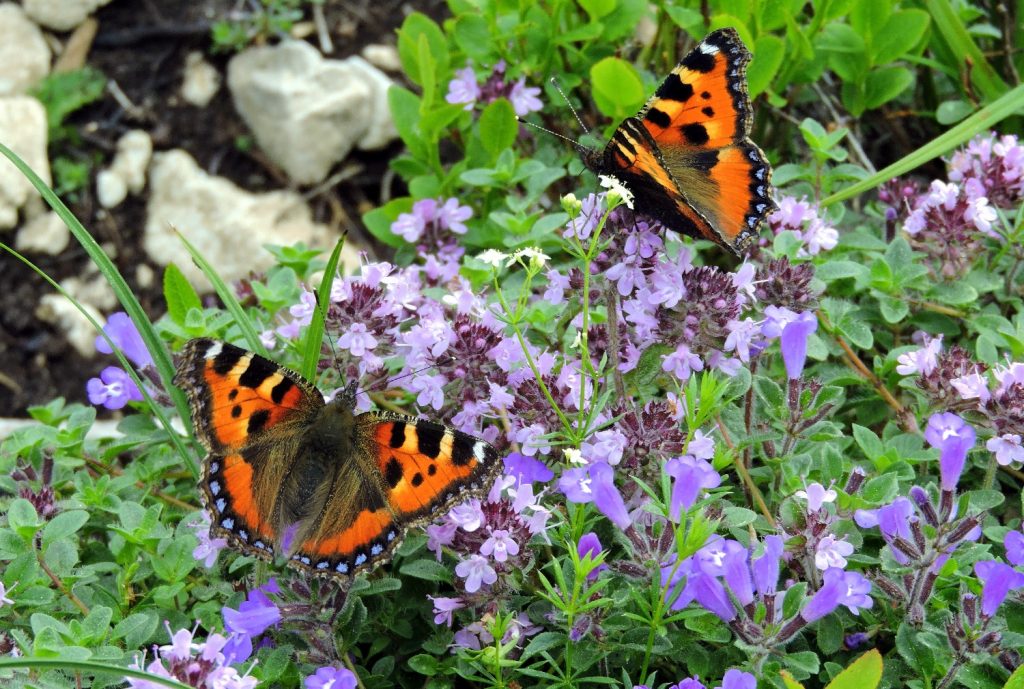
Daisies
There are many types of perennial daisy – the Shasta, for example – and most daisies appeal to butterflies thanks to nectar reliability and their tendency to bloom in thick bunches. Daisies grow in most zones of the USA and adapt to various extreme conditions.
Some gardeners regard Daisies as weeds thanks to their sometimes invasive growth patterns – keep a close eye!
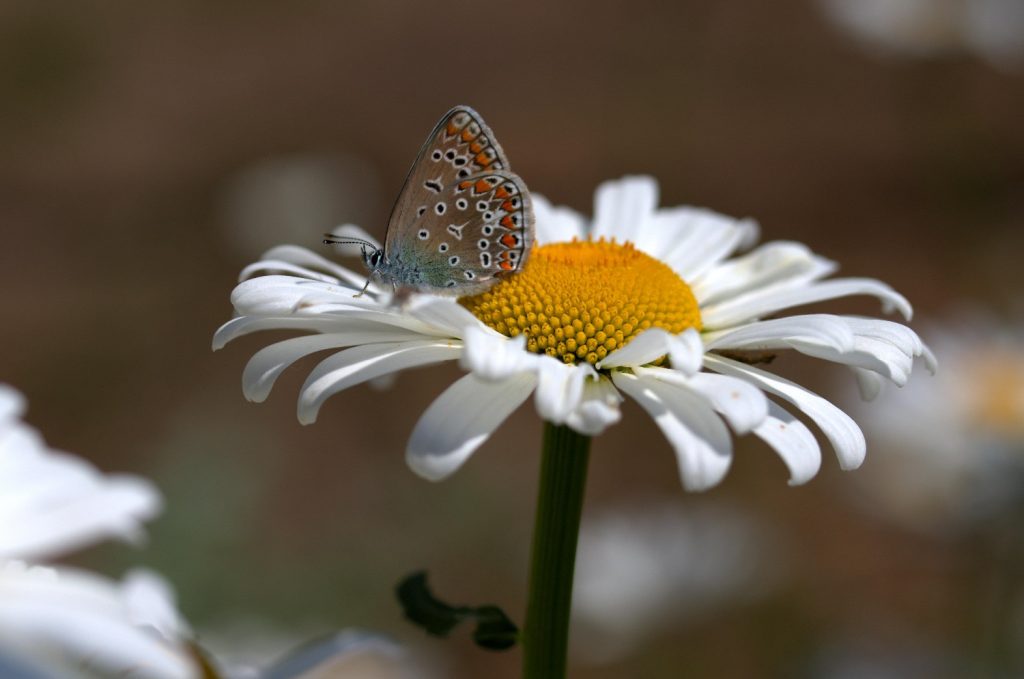
Dianthus
The dianthus (or carnation)’s famously pink, and red color bursts instantly appeal to roaming butterflies. Their flat, open flowers are also easy for butterflies to sit on and feed from – though the intoxicating smell helps pull in visitors, too!
In fertile soil, you’ll grow hardy, healthy dianthus across USDA zones five up to nine, but keep deadheading them if you want them to reflower.
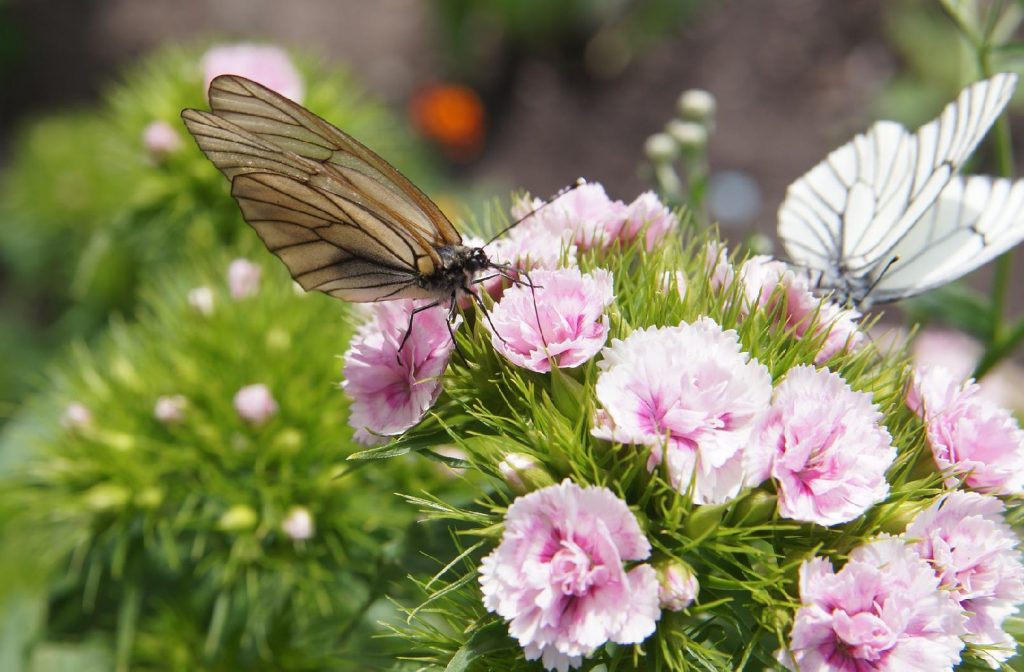
Echinacea
Frequently grown as a companion to lavender, the echinacea is an eye-popping bright plant that offers wide, flat flowers for butterflies to rest on while feeding.
Otherwise known as the coneflower, this perennial grows hardy in USDA zones three to nine and will bring monarch and admiral butterflies fluttering well into the fall.
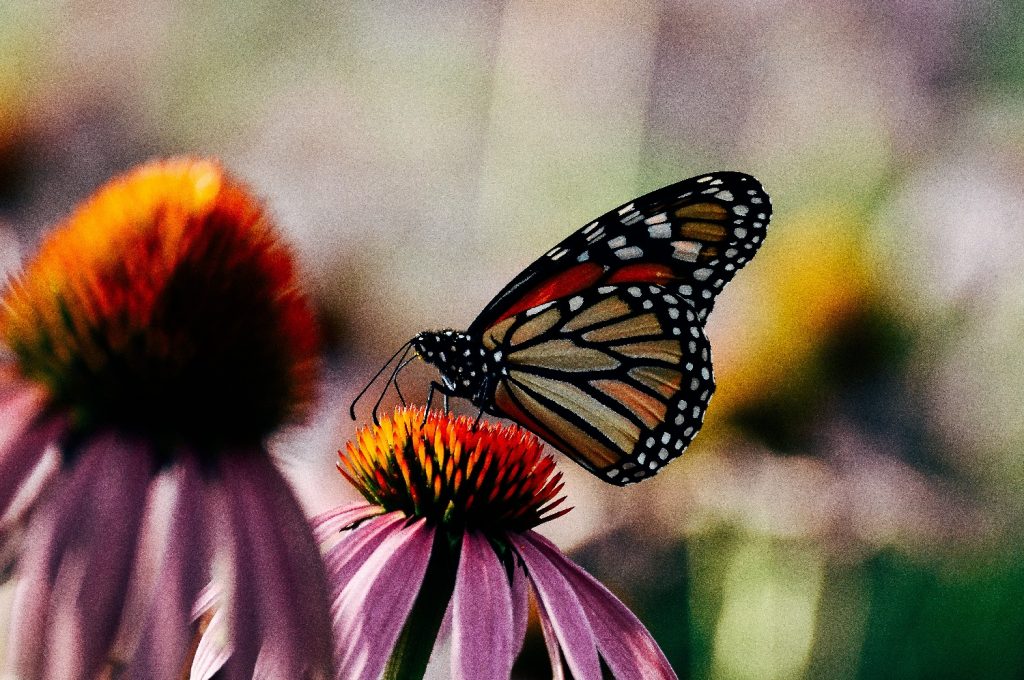
Fennel
Fennel can be grown as either annual or perennial, and while it usually won’t bloom for too long, this strongly sweet-smelling plant will appeal to many butterfly species across USDA zones four through to nine.
Fennel will grow to around six feet tall, maximum – and its short-lived bursts of red and orange typically attract butterflies looking for flat, open flowers towards the end of August.
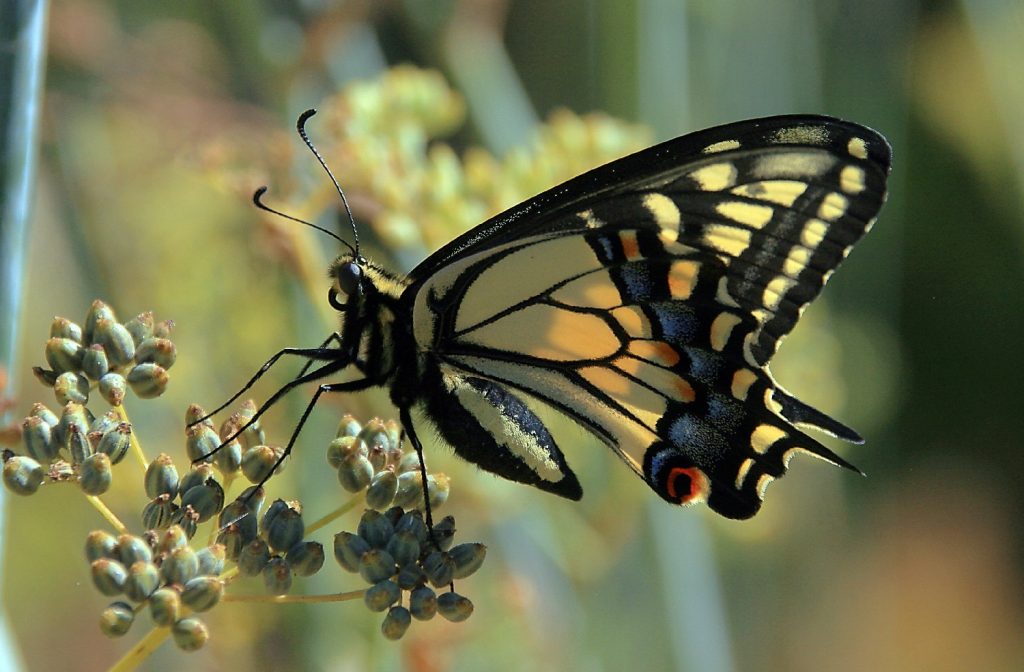
Floss Flower
The ageratum or blue mink is highly popular with butterflies thanks to its pom-pom shape and palette in blue, pink, and white. They’ll typically grow to three feet tall and tend to prefer sitting in full sun – where most butterflies hunt for nectar.
The floss flower is best-suited to USDA zones nine through 11 as a hardy annual, growing reliable color well into October.
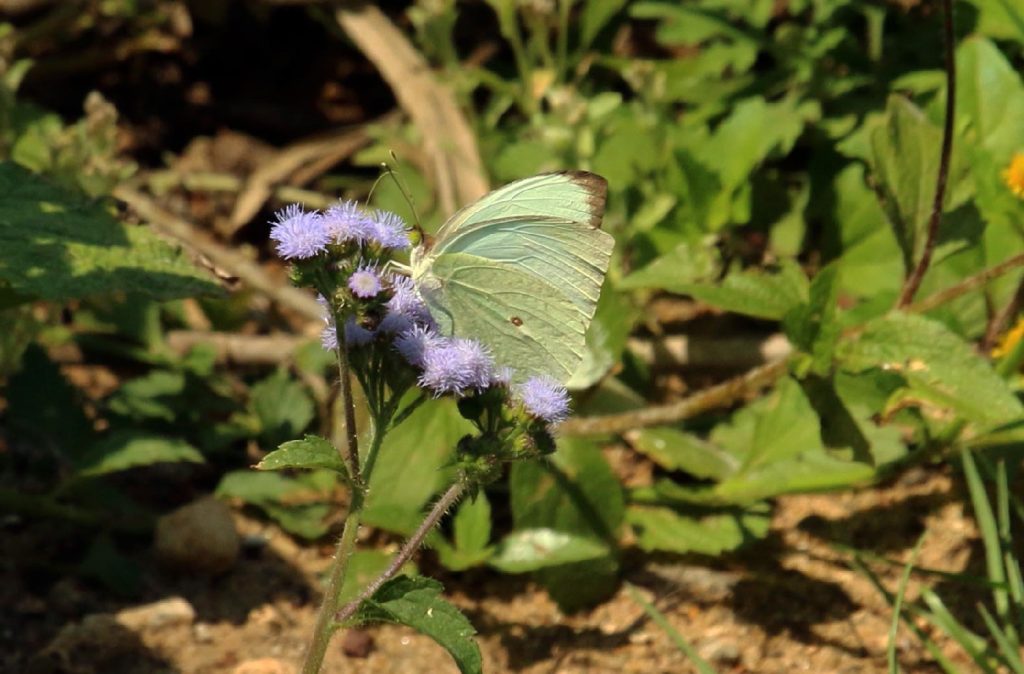
Geranium
Geraniums are reliable butterfly attractors thanks to their flat open flowers and sweet scents, typically hardy between USDA zones ten and 11. Good to grow in the ground, hanging baskets, containers, or pots, geraniums are predictable and easy to manage.
Make sure to deadhead these plants to keep them blooming – butterflies will keep coming back for their huge nectar stores.
Gladiolus
Butterflies and other roaming insects are attracted to this garden favorite’s intense colors and heady fragrance. Butterflies love gladioli as they’re easy to spot growing in full sun, reaching around two feet in height (easy for hovering insects to feed from).
Gladioli grow hardily from at least USDA zone seven, providing heavy nectar for a few weeks at a time. Keep regrowing them as they – sadly – don’t bloom for long.
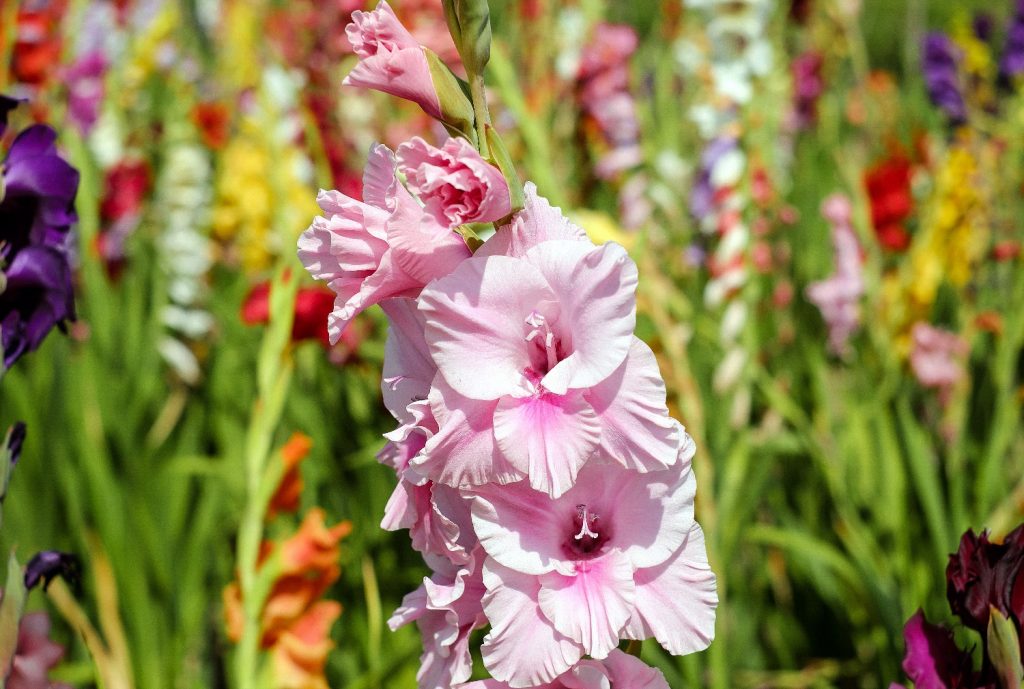
Goldenrod
The goldenrod or solidago plant is a hardy perennial in USDA zones three to nine, providing a yellowy, late July-August spray that typically attracts red admirals and painted ladies. It’ll grow to an impressive six feet in height, with yellow blooms acting as beacons for reliable nectar!
Goldenrod arrives in several wild varieties and typically propagates fast – choose wisely if attempting to contain it.
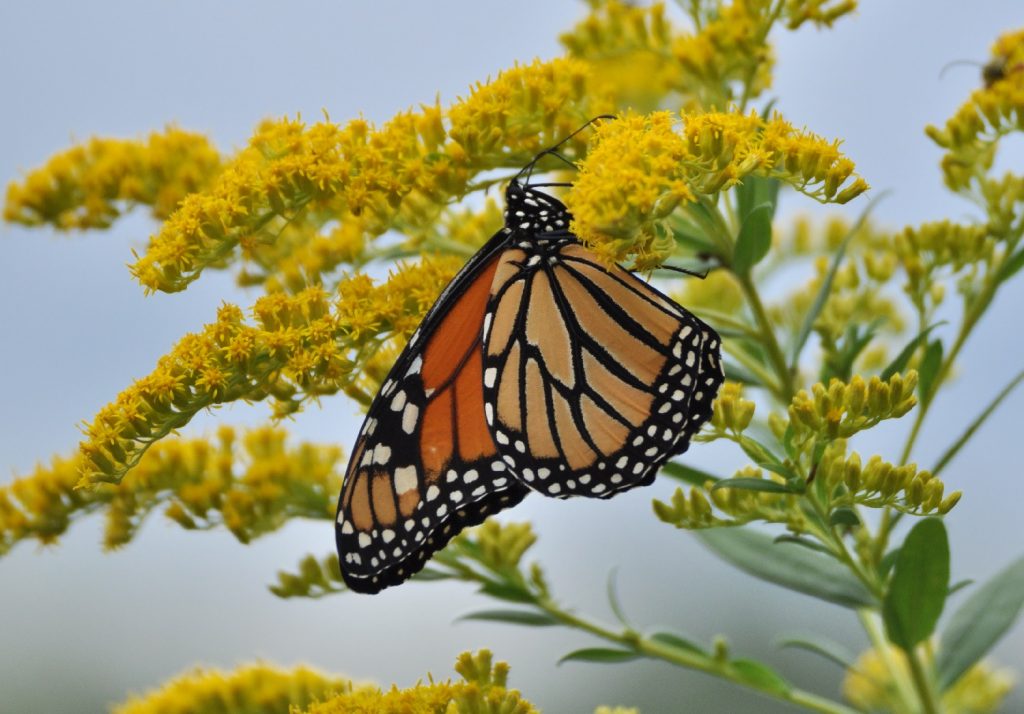
Hibiscus
Hibiscus plants are a treat for butterfly eyes and tastes – they bloom in various colors, including white, yellow, pink, red, and lemon, and often with contrasting centers containing plenty of pollen and nectar.
Hibiscus is a hardy plant from USDA zones five up to eight, with big, flat blooms that many butterflies – including the common painted lady – will use as nurseries for their young.
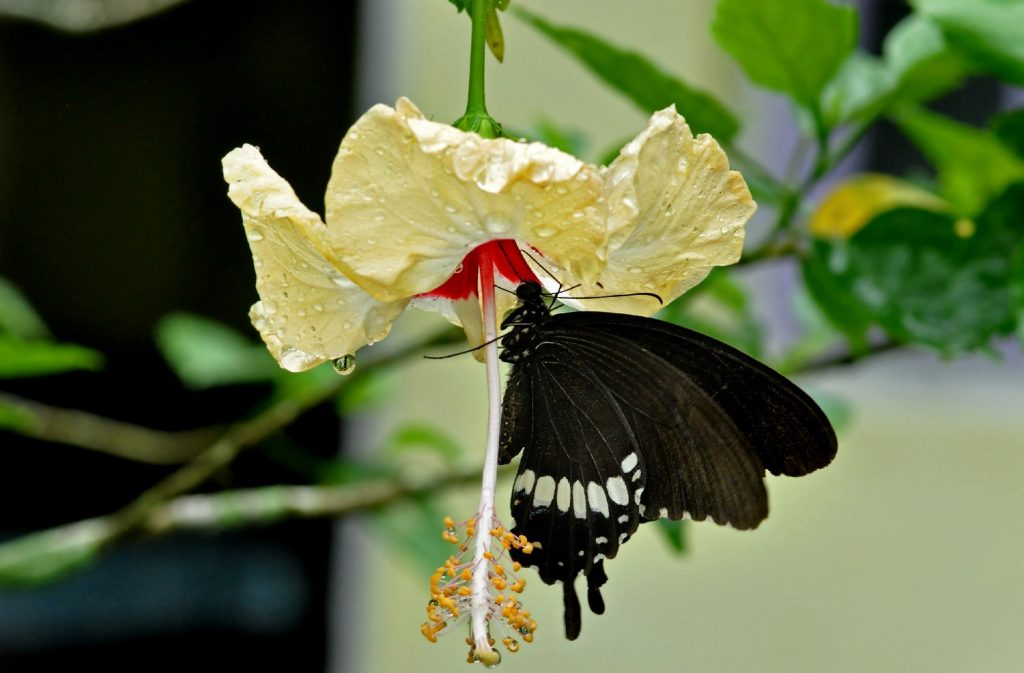
Hollyhock
Hollyhock grows amazingly well in USDA zones three through eight and appeals to butterflies thanks to its open-faced flower array. It’ll grow to be an impressive eight feet at tallest, with colors as diverse as mauve, red, yellow, pink, peach, and white.
Like hibiscus, this homely favorite tends to be a preferred host plant for many butterfly species, with some skippers and painted ladies laying young here.
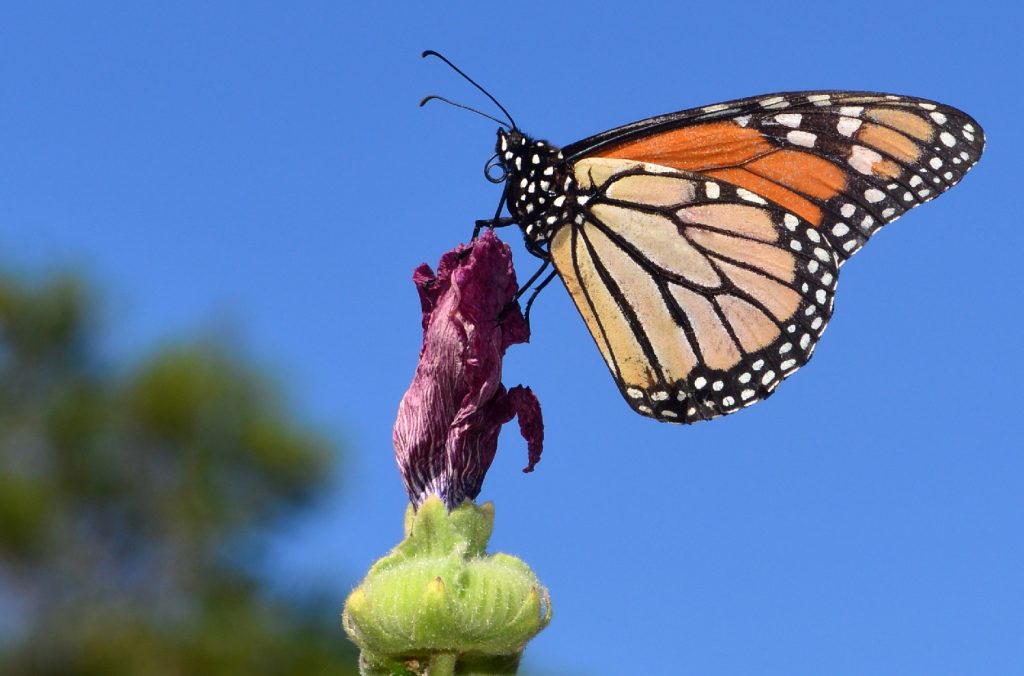
Hydrangeas
Many varieties of hydrangeas will attract butterflies, with the paniculata and Pink Diamond breeds most likely to appeal to insects across USDA zones three to nine. This super-bright and colorful bloomer will adapt to soil pH better than most and may even change its hues over time.
Caution – not all hydrangeas give off reliable nectar, with moped varieties being reasonably infertile. They will attract butterflies, but not regularly.
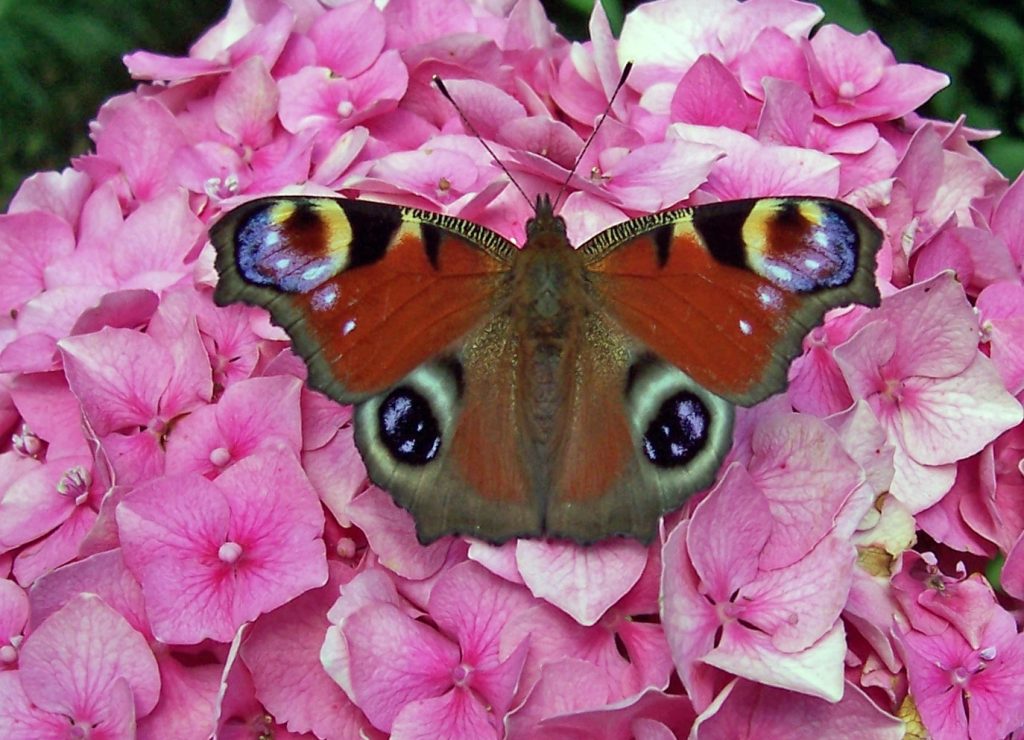
Lantana
Lantana is sometimes treated as an annual but is generally perennial, coming into its own as a glowing performer in its second year of growth. Growing well in zones nine to 11, Lantana requires frequent watering, thriving in full sun, and growing up to four feet in height – easy for butterflies to find and access for nectar.
Striking colors of red, pink, purple, and orange are always likely to catch the eyes of monarchs and cabbage white butterflies.
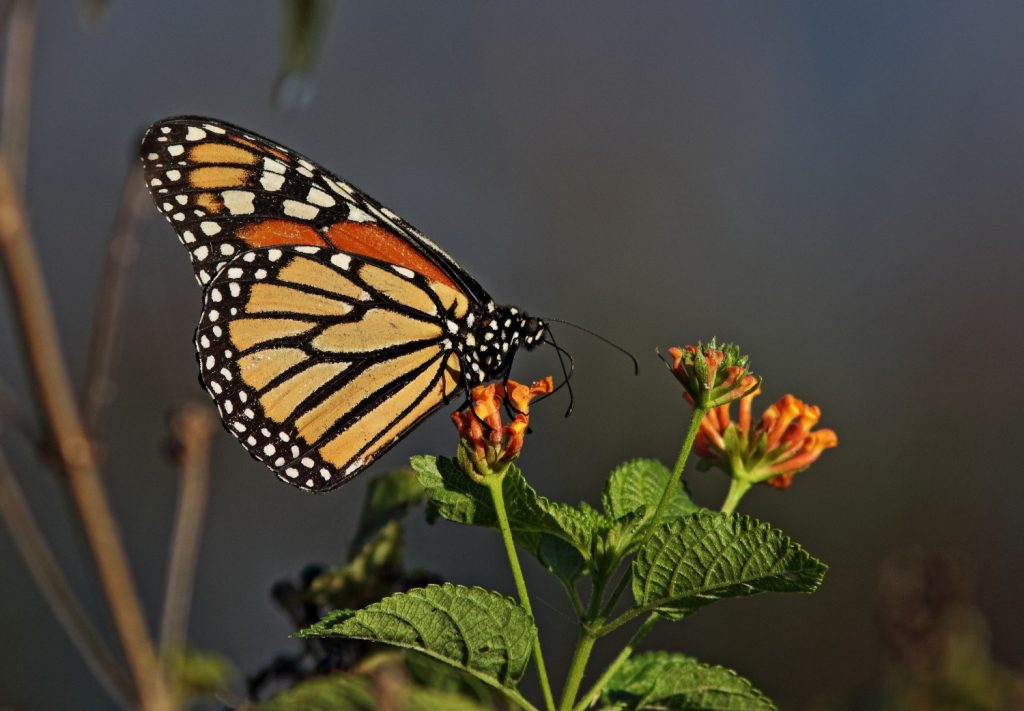
Lavender
Thriving as a perennial in USDA zones five through nine, ever-reliable lavender provides abundant nectar from spring through fall. Monarchs, duskywings, and skippers love lavender in particular – as this plant will bloom in thick, lush groups of striking purple.
Lavender is reasonably easy to look after, and most butterflies will appreciate the plant’s easy-access flower shapes.
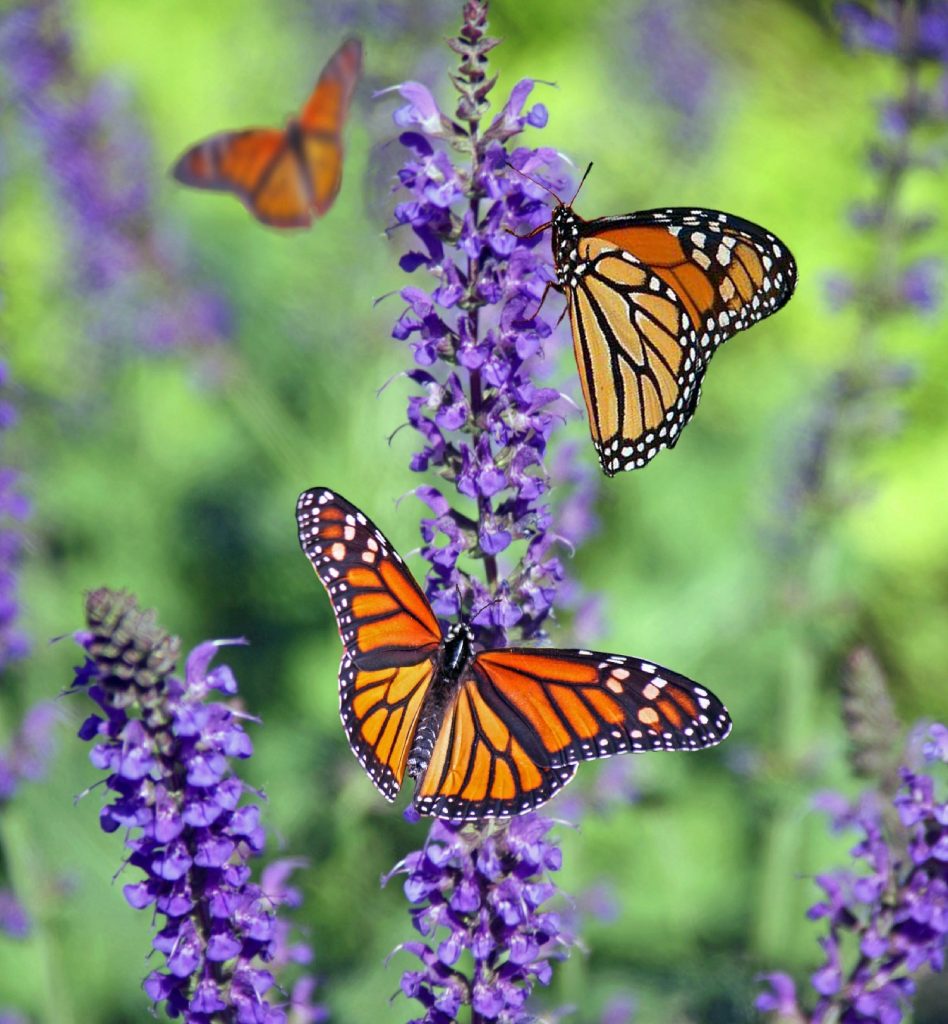
Lilies
There are around 90 different lily types, and this nectar-rich plant will typically attract butterflies thanks to its incredible luminosity. Curious bowl-shaped flowers provide easy access to food for butterflies, who can simply rest, attach and drink.
Lilies grow to around eight feet tall, though many will grow to half this height if cultivated carefully. Try not to grow your lilies too tall if you intend to bring butterflies flocking!
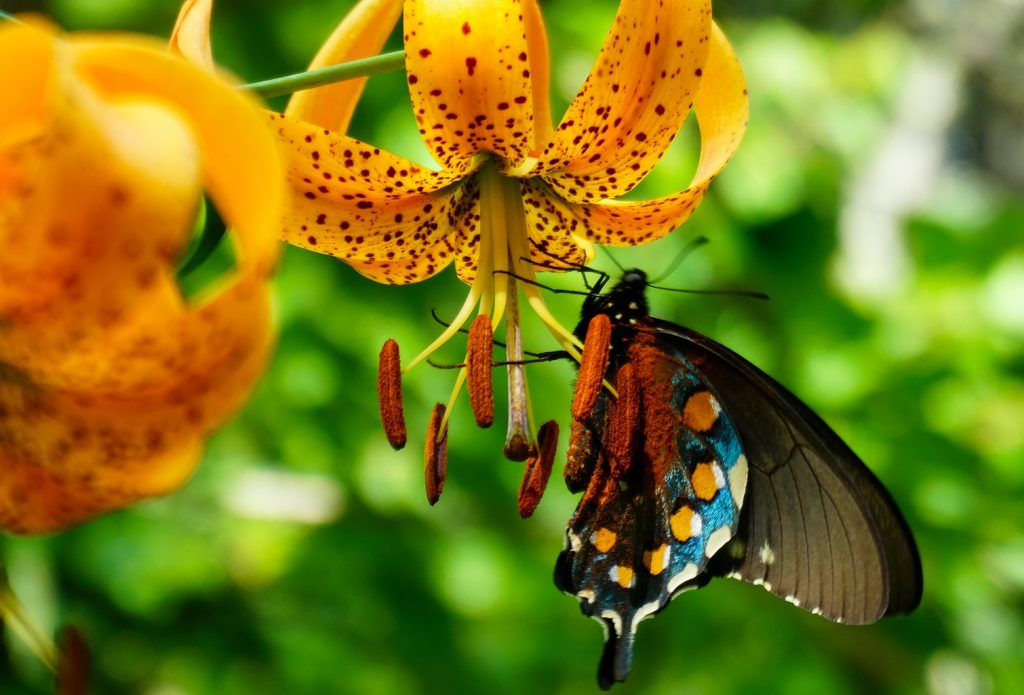
Marigolds
Bold, bright, and spicy to smell, marigolds propagate wildly and need little encouragement. They bloom in reds and yellows and offer flat, wide flowers where butterflies can easily sit and feed.
Many butterflies flock to marigolds as they’re reliable sources of wild nectar. Gardeners love them, too, as they’re highly resistant to frequent pests. In the warmth, you can expect marigolds to grow hardy in USDA zones two through 11.
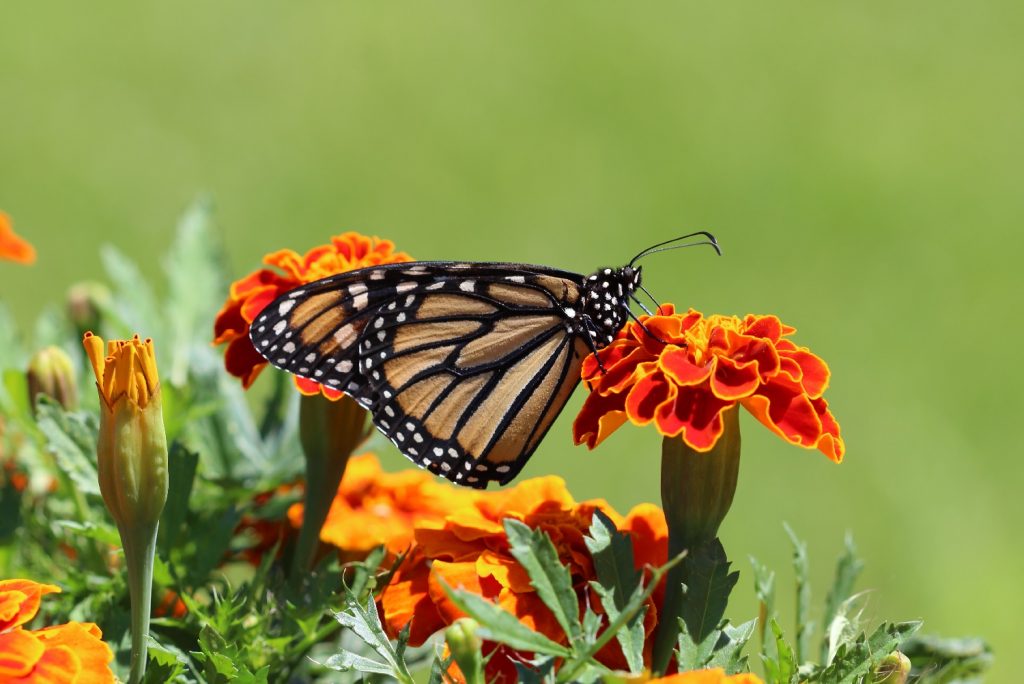
Pansies
Pansies will happily grow in partial sun and offer a striking smattering of blue, orange, pink, purple, white, and more – they’re difficult for butterflies to miss. Flat and open-faced for easy feeding, you’ll find pansies easy to grow in USDA zones four to eight.
Pansies tend to attract butterflies when growing in the shade – while the insects typically won’t head for shade unless they need to cool down, the pansy or viola is a reliably rich source of nectar in the dark.
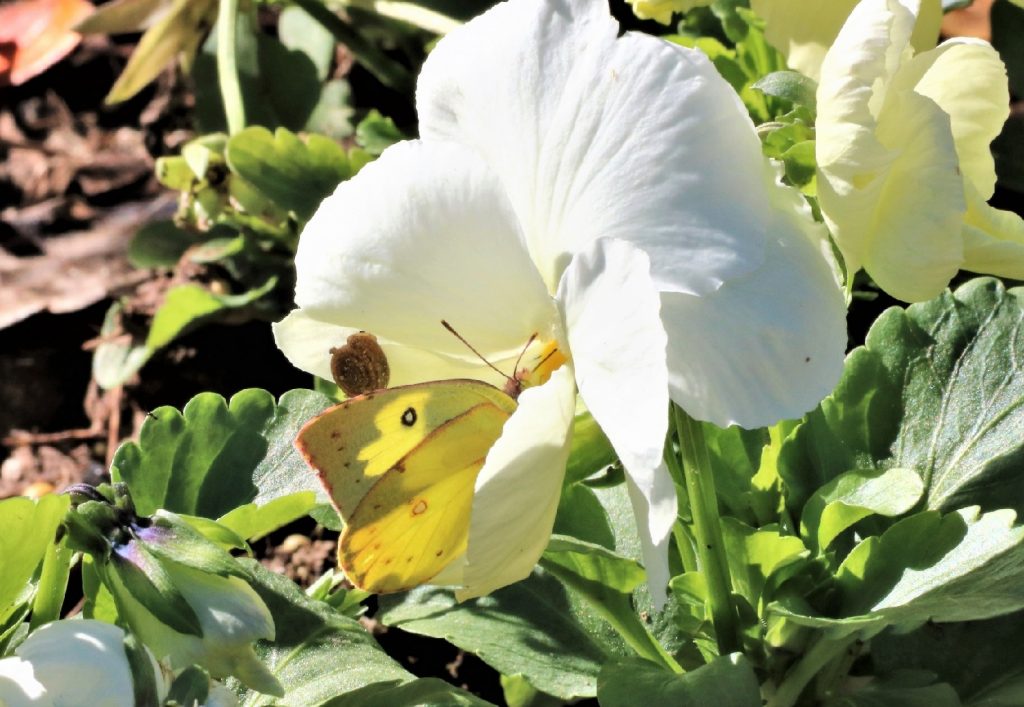
Petunia
Petunias have a wide range of bright and subtle colors, ranging from crimson to hot pink and white – and they love the open sun. These trumpet-shaped flowers are highly heat-resistant and will grow to around a foot and a half – just right for butterflies to visit and access.
You’ll typically find petunias growing at their hardiest between USDA zones eight through 11. They’re great for hanging in baskets and planting in the soil directly – moisture won’t bother them.
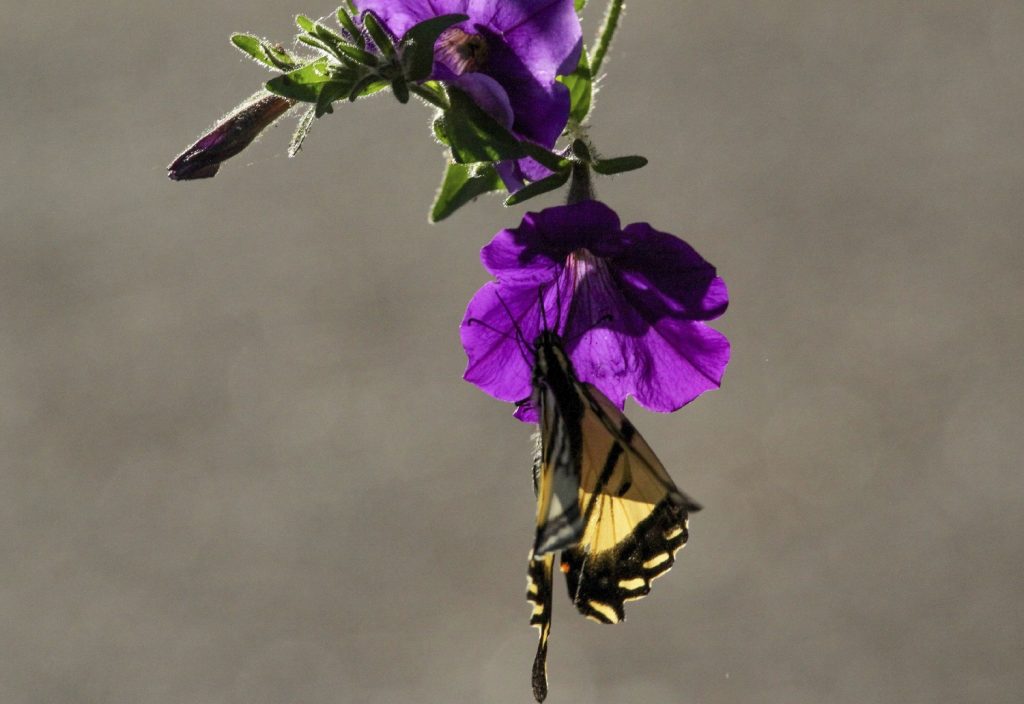
Phlox
Phlox is a summer bloomer that’s perennially hardy within USDA zones four and eight and appeals to butterflies such as checkerspots, thanks to their preference for growing in clusters. Phlox bursts into colors as diverse as pinks, reds, plums, blues, and yellows – and some are even multicolored.
These literal stars of the garden are much-loved by butterflies thanks to their nectar reliability. They won’t bloom for long or much past the summer.
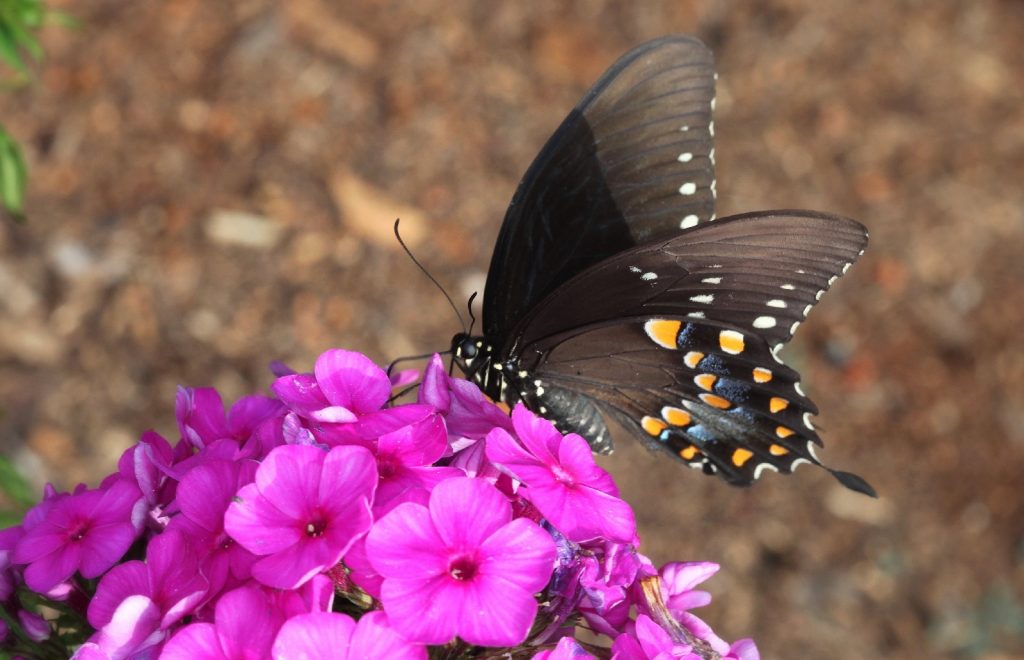
Roses
Complex and strong-smelling, common garden roses attract butterflies, though they may not always give off lots of nectar. They’re flat enough to appeal to resting insects looking to feed, but their piercing colors are likely to catch the most interest.
Though species may vary, USDA zones seven to nine tend to be safe spots to grow hardy roses. It’s usually a good idea to grow roses alongside other butterfly attractors – such as marigolds – to encourage pollination.
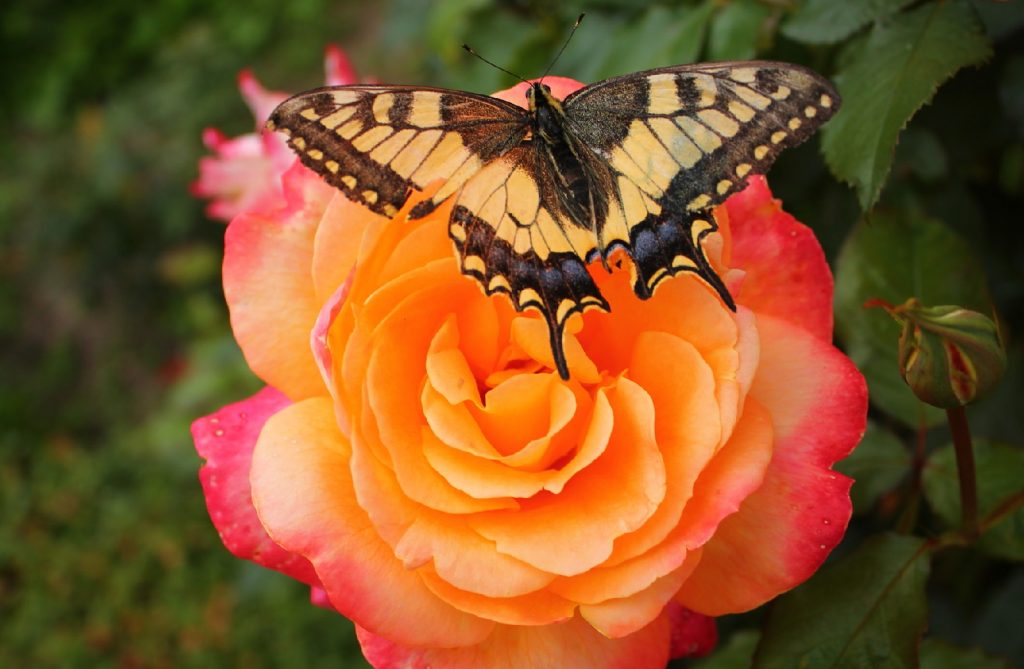
Sage
Much like lavender, this spiky, purple-blooming herb will appeal to butterflies thanks to its unique fragrance. It’ll typically grow no taller than five feet in height and will generally persist well as a perennial between zones four and 12.
Skippers and cabbage whites seem to prefer sage out of most butterfly species, but its heat-resistant nature will ensure sage is a reliably-available source of nectar for spring all the way to fall.
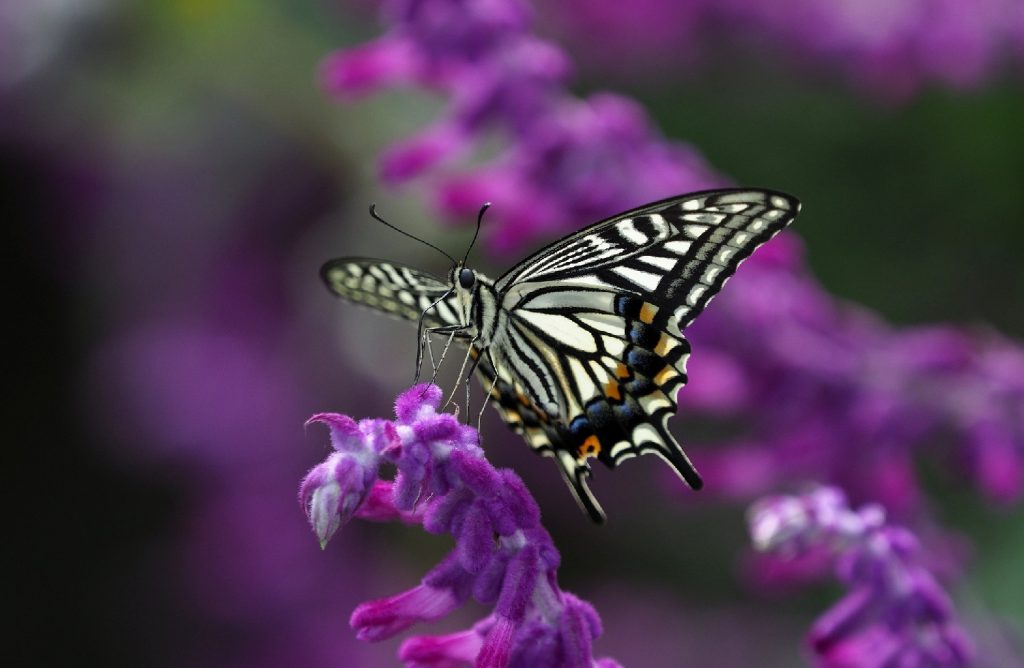
Snapdragons
Fertile and bold-colored, snapdragons are popular with butterflies as they stand out among most summer-blooming flowers. Snapdragons are host plants for several butterfly species, too – with various hairstreaks and swallowtails visiting most frequently.
Snapdragons fare well across spring through fall and explode in purples, pinks, yellows, whites, reds, and more. It’s a hardy nectar source growing in USDA zones seven to 11.
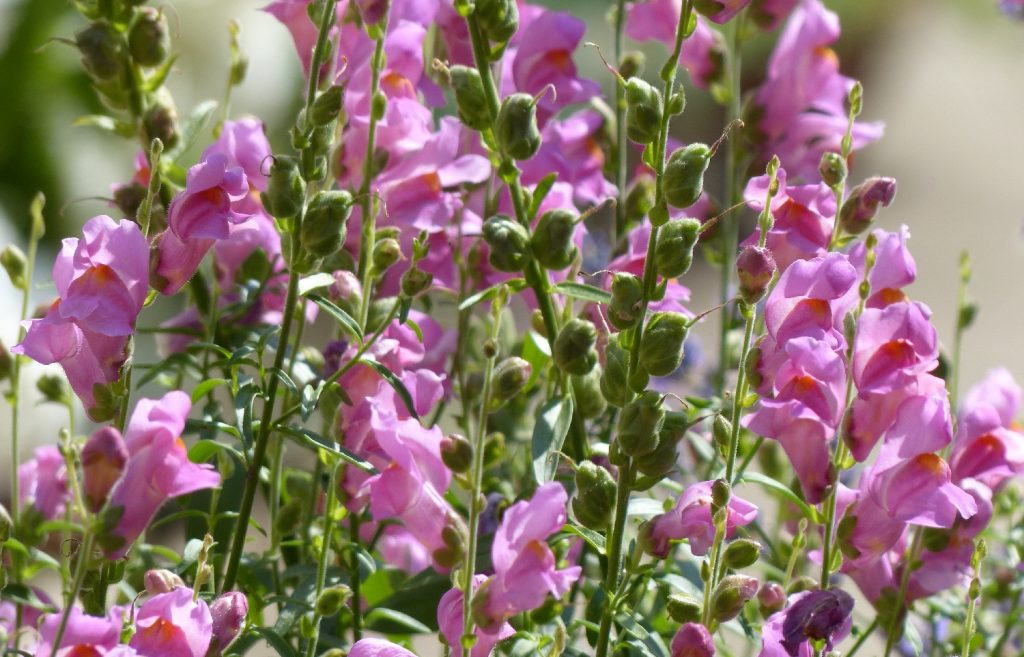
Sunflowers
Sunflowers are perhaps most pollinators’ favorite plants thanks to their microscopic pockets of nectar – they’re immensely popular as host plants for butterflies in particular. Sunflowers are bright, open, and fertile through the sunnier months, their heads turning towards the sun – where butterflies roam in the open.
This annual plant grows best in USDA zones ten and 11. Some species can grow extremely tall – meaning for the best butterfly garden, you’ll need to curtail their growth somewhat.
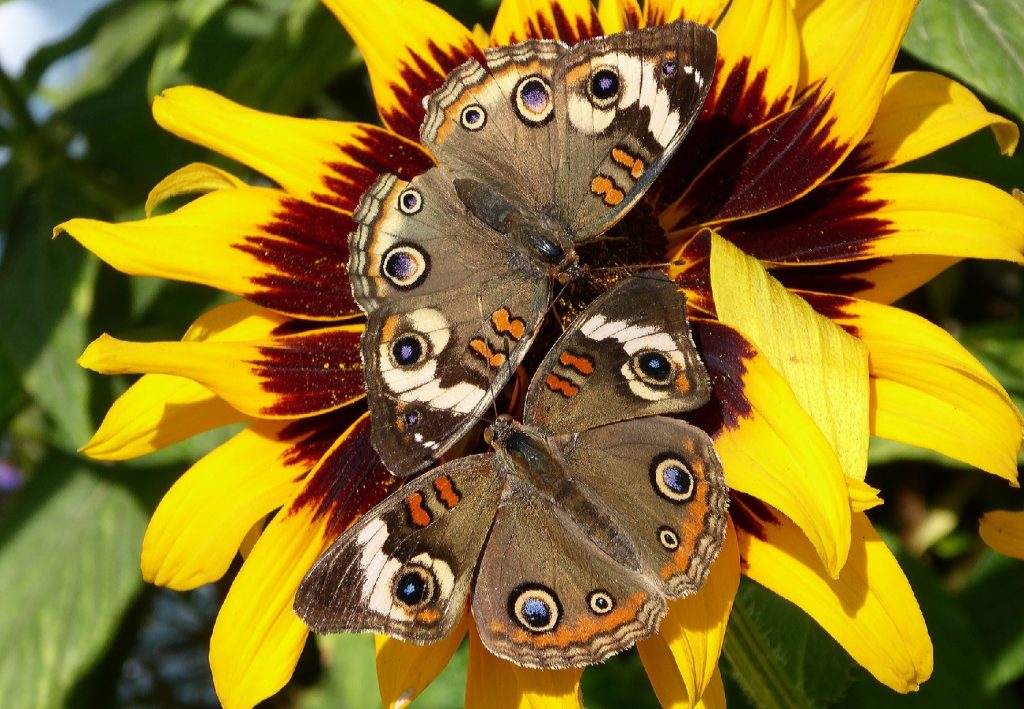
Verbena
Bursting with nectar and densely packed in blue and purple spikes, butterflies like the gray hairstreak and eastern comma find verbenas particularly interesting. They’re typically easy to grow in USDA zones nine to 11.
Verbenas are reliable at attracting butterflies but can sometimes be invasive – try and grow them away from less hardy or more sensitive plants in your garden.
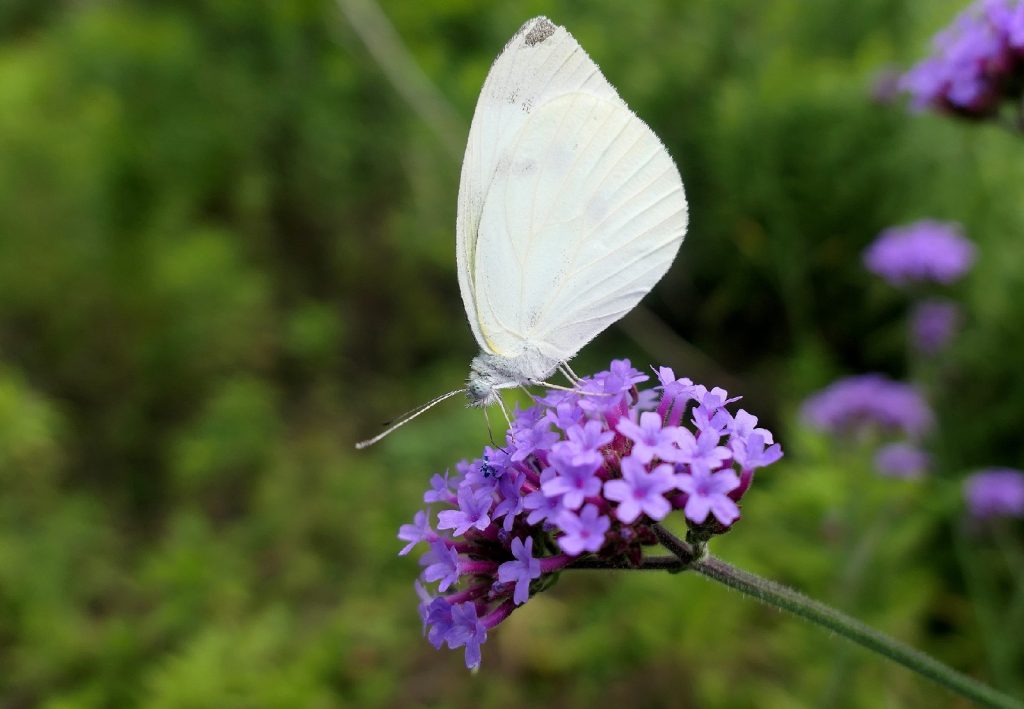
Yarrow
While regarded as an invasive weed in some quarters, yarrow frequently proves popular with butterflies, boasting huge nectar reserves and blooming in clusters of white and yellow. The yarrow’s flower is flat and wide enough for most butterflies to carefully rest and feed from, too.
Yarrow grows typically between one and four feet in height over time and will generally grow as a hardy perennial between USDA zones three and nine. You’ll normally find this flower is excellent for attracting hairstreaks and admirals.
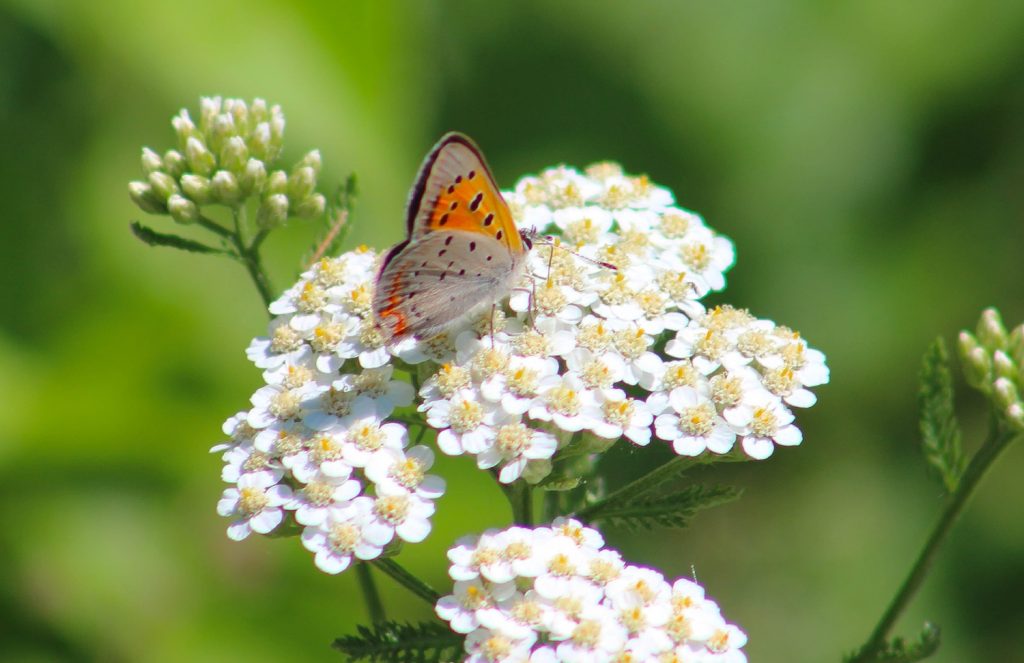
Zinnia
Open-shaped and detonating in color, zinnia shrubs generally appeal to most butterfly species fluttering around USDA zones two through eight. The most popular zinnias grow out in the wide open sun, but some species can offer a surprising shaded snack for resting butterflies.
Rainbow-colored zinnia clusters are easy to grow between summer and fall, and you can expect smatterings of oranges, pinks, yellows, reds, and purples – sometimes even greens.
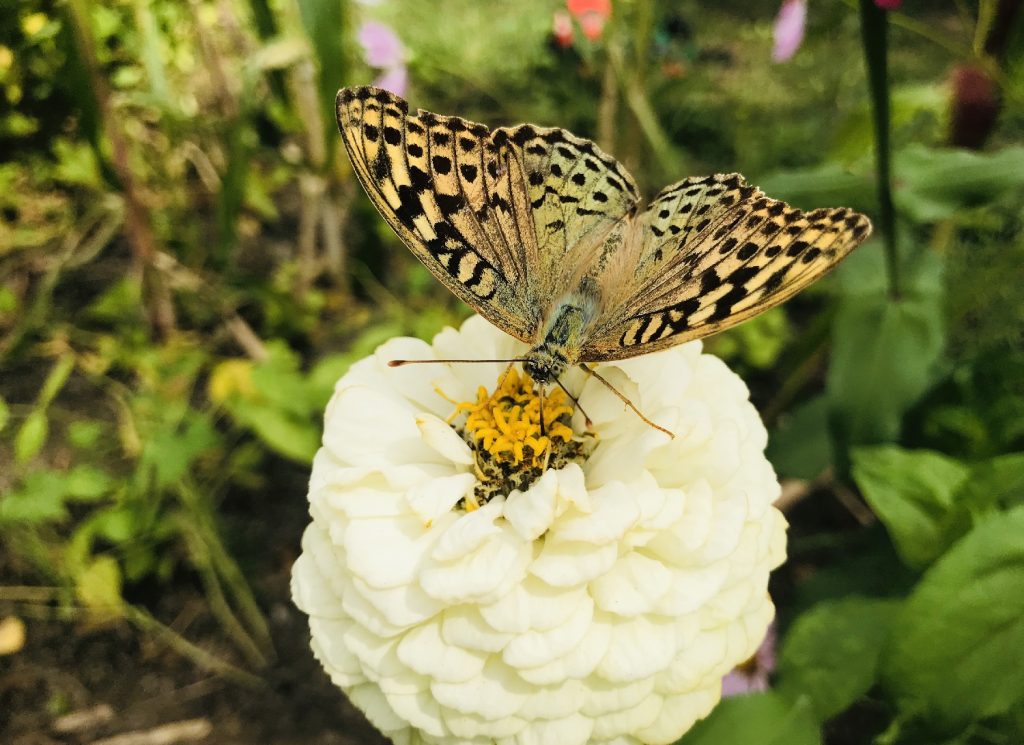
What do butterflies look for in flowers?
Butterflies prefer flowers that are boldly and brightly colored – mainly as they tend to be shorter-sighted than most pollinators. A great way to attract butterflies to your garden is to cultivate a bed or plot full of eye-catching colors and shapes.
The average butterfly will also prefer plants that bloom flat, open-shaped flowers. Unlike some other pollinators, butterflies can’t feed from flowers ‘on the go’ – they’ll need to sit and rest while drinking nectar.
Butterflies aren’t typically attracted by smell or fragrance as much as other pollinators (such as bees), but they prefer plants that give off stronger scents (such as lavender and marigold).
You may also find that growing plants of a few feet in height (a little elevated off the ground) will appeal most to butterflies. They don’t fly too high in the air and won’t head directly for the ground unless resting.
Are there any flowers butterflies don’t like?
Butterflies tend to be some of the least picky pollinators that visit US gardens, but there are a few species they tend to overlook (or even avoid), largely thanks to inaccessible shapes or dull colors. Interestingly, while appealing to many other pollinators, neither dahlias nor gardenias attract much interest from butterflies.
It’s difficult to deter butterflies from your garden, providing you grow a variety of bold-colored, persistent flowers that prefer the open sun. You’re more likely to attract butterflies in the warmer months, but it’s always a good idea to grow some blooms that will flower until fall to get more visitors.
Butterflies love many more flowers out there – those listed here are merely the tried-and-tested best!
